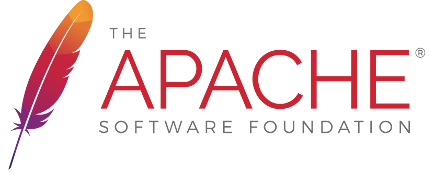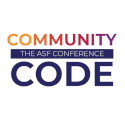Configure with Spring for the simple front end serverYou can configure the CXF simple front end server endpoint by using the <simple:server> tag in spring.
<beans xmlns="http://www.springframework.org/schema/beans"
xmlns:xsi="http://www.w3.org/2001/XMLSchema-instance"
xmlns:simple="http://cxf.apache.org/simple"
xmlns:soap="http://cxf.apache.org/bindings/soap"
xsi:schemaLocation="
http://www.springframework.org/schema/beans http://www.springframework.org/schema/beans/spring-beans-2.0.xsd
http://cxf.apache.org/bindings/soap http://cxf.apache.org/schemas/configuration/soap.xsd
http://cxf.apache.org/simple http://cxf.apache.org/schemas/simple.xsd">
<simple:server id="pojoservice" serviceClass="demo.hw.server.HelloWorld" address="/hello_world">
<simple:serviceBean>
<bean class="demo.hw.server.HelloWorldImpl" />
</simple:serviceBean>
</simple:server>
</beans>
The
It also supports many child elements:
Here is a more advanced example which shows how to provide interceptors and properties:
<beans xmlns="http://www.springframework.org/schema/beans"
xmlns:xsi="http://www.w3.org/2001/XMLSchema-instance"
xmlns:simple="http://cxf.apache.org/simple"
xmlns:soap="http://cxf.apache.org/bindings/soap"
xsi:schemaLocation="
http://www.springframework.org/schema/beans http://www.springframework.org/schema/beans/spring-beans-2.0.xsd
http://cxf.apache.org/bindings/soap http://cxf.apache.org/schemas/configuration/soap.xsd
http://cxf.apache.org/simple http://cxf.apache.org/schemas/simple.xsd">
<simple:server id="inlineInvoker"
serviceClass="org.apache.cxf.service.factory.HelloServiceImpl"
address="http://localhost:8080/simpleWithAddress">
<simple:invoker>
<bean class="org.apache.cxf.service.invoker.BeanInvoker">
<constructor-arg>
<bean class="org.apache.cxf.service.factory.HelloServiceImpl"/>
</constructor-arg>
</bean>
</simple:invoker>
</simple:server>
<simple:server id="inlineSoapBinding"
serviceClass="org.apache.cxf.service.factory.HelloService"
serviceBean="#greeter"
address="http://localhost:8080/test"
serviceName="t:HelloService"
xmlns:t="http://apache.org/hello_world_soap_http"
endpointName="t:HelloPort">
<simple:binding>
<soap:soapBinding mtomEnabled="true" version="1.2"/>
</simple:binding>
</simple:server>
</beans>
Configure with Spring for the simple front end clientYou could use the <simple:client> element to configure the simple front end client, you can use the spring's getBean API to get the client instance from the application context.
<beans xmlns="http://www.springframework.org/schema/beans"
xmlns:xsi="http://www.w3.org/2001/XMLSchema-instance"
xmlns:simple="http://cxf.apache.org/simple"
xmlns:soap="http://cxf.apache.org/bindings/soap"
xsi:schemaLocation="
http://www.springframework.org/schema/beans http://www.springframework.org/schema/beans/spring-beans-2.0.xsd
http://cxf.apache.org/bindings/soap http://cxf.apache.org/schemas/configuration/soap.xsd
http://cxf.apache.org/simple http://cxf.apache.org/schemas/simple.xsd">
<simple:client id="client"
serviceClass="org.apache.cxf.service.factory.HelloService"
address="http://localhost:9000/foo2"
serviceName="s:XMLService"
xmlns:s="http://apache.org/hello_world_soap_http"
endpointName="s:XMLPort"
bindingId="http://cxf.apache.org/bindings/xformat"/>
</beans>
The
It also supports many child elements:
Here is a more advanced example which shows how to provide interceptors and properties:
<beans xmlns="http://www.springframework.org/schema/beans"
xmlns:xsi="http://www.w3.org/2001/XMLSchema-instance"
xmlns:simple="http://cxf.apache.org/simple"
xmlns:soap="http://cxf.apache.org/bindings/soap"
xsi:schemaLocation="
http://www.springframework.org/schema/beans http://www.springframework.org/schema/beans/spring-beans-2.0.xsd
http://cxf.apache.org/bindings/soap http://cxf.apache.org/schemas/configuration/soap.xsd
http://cxf.apache.org/simple http://cxf.apache.org/schemas/simple.xsd">
<bean id="saajIn" class="org.apache.cxf.binding.soap.saaj.SAAJInInterceptor"/>
<bean id="saajOut" class="org.apache.cxf.binding.soap.saaj.SAAJOutInterceptor"/>
<simple:client id="client1"
serviceClass="org.apache.cxf.service.factory.HelloService"
address="http://localhost:9000/foo"
serviceName="s:SOAPService"
xmlns:s="http://apache.org/hello_world_soap_http">
<simple:binding>
<soap:soapBinding mtomEnabled="true" version="1.2"/>
</simple:binding>
<simple:inInterceptors>
<bean class="org.apache.cxf.interceptor.LoggingInInterceptor"/>
<ref bean="saajIn"/>
</simple:inInterceptors>
<simple:outInterceptors>
<bean class="org.apache.cxf.interceptor.LoggingOutInterceptor"/>
<ref bean="saajOut"/>
</simple:outInterceptors>
<simple:conduitSelector>
<bean class="org.apache.cxf.endpoint.NullConduitSelector"/>
</simple:conduitSelector>
</simple:client>
</beans>
|

